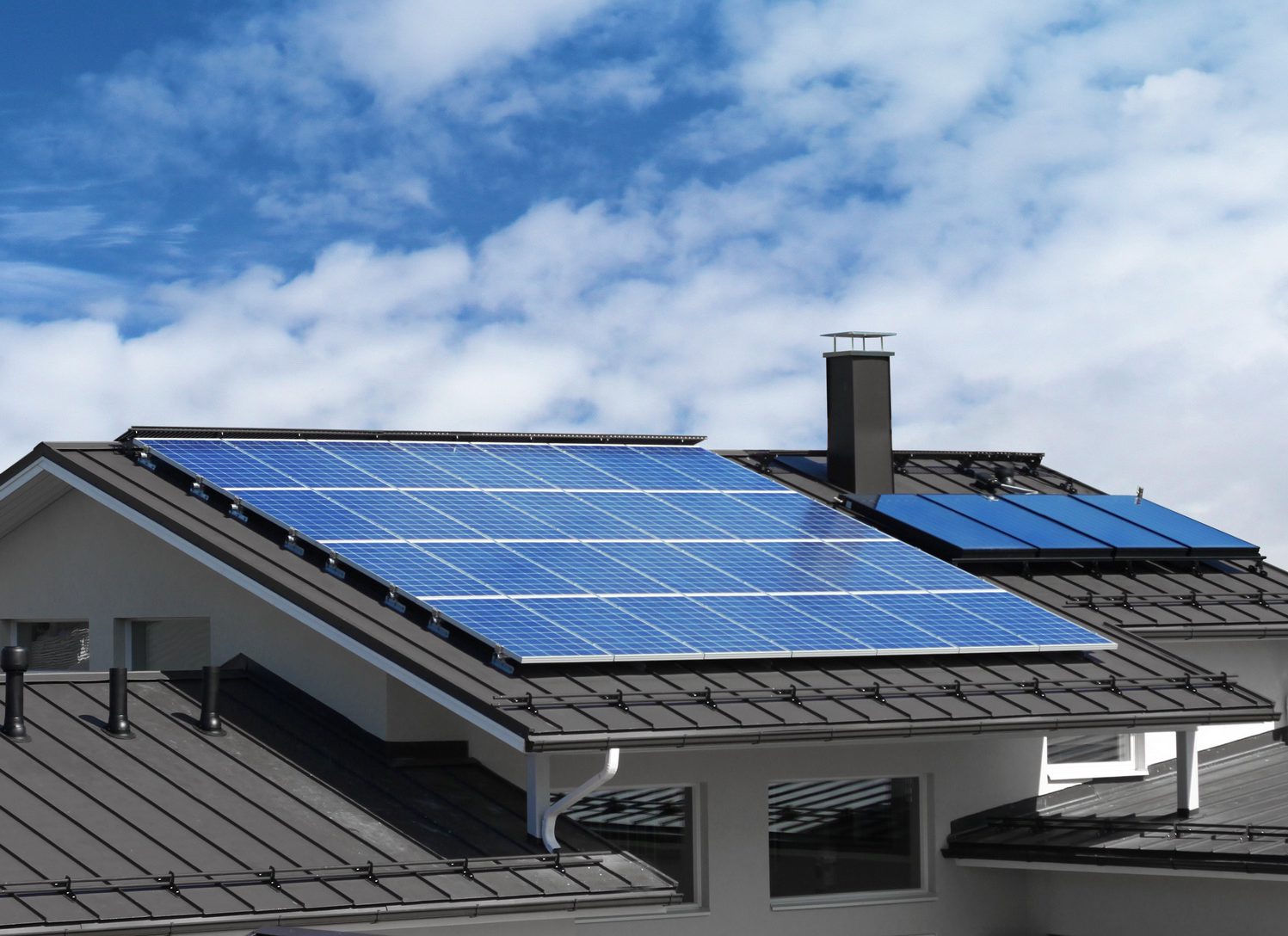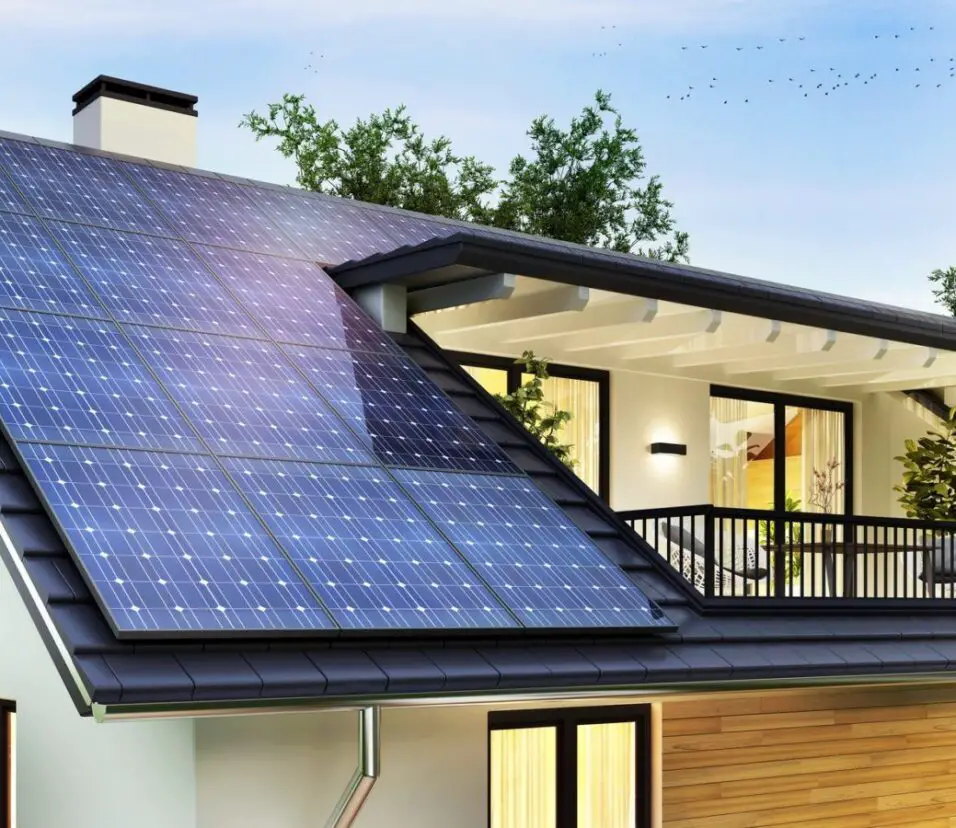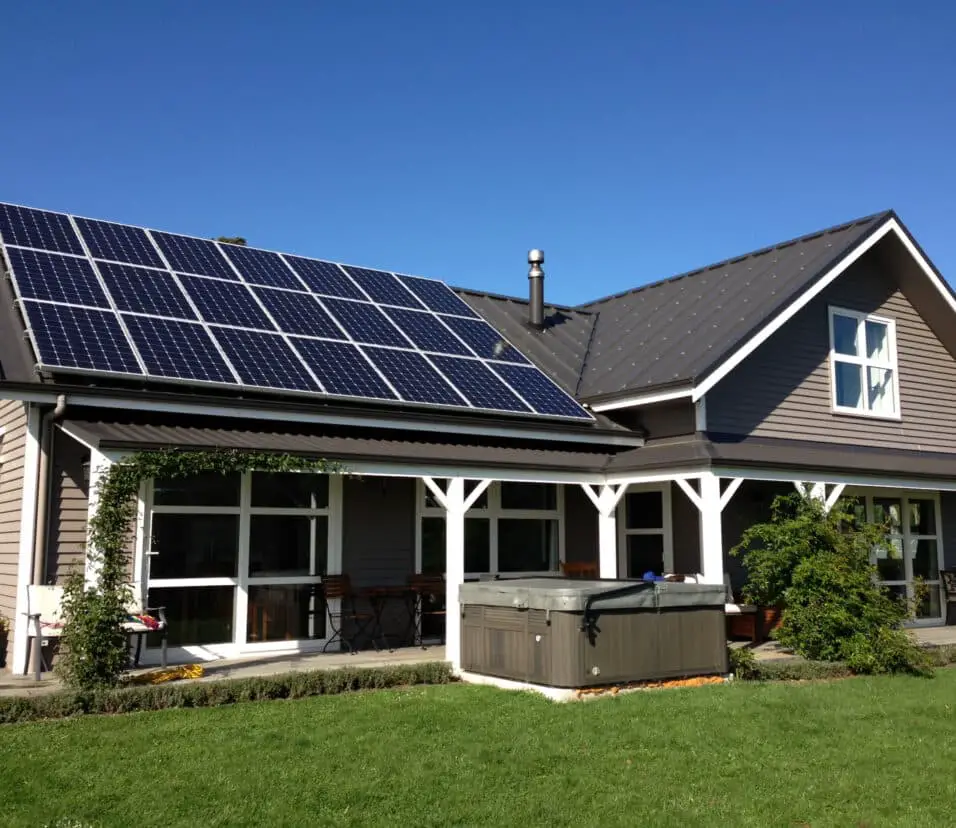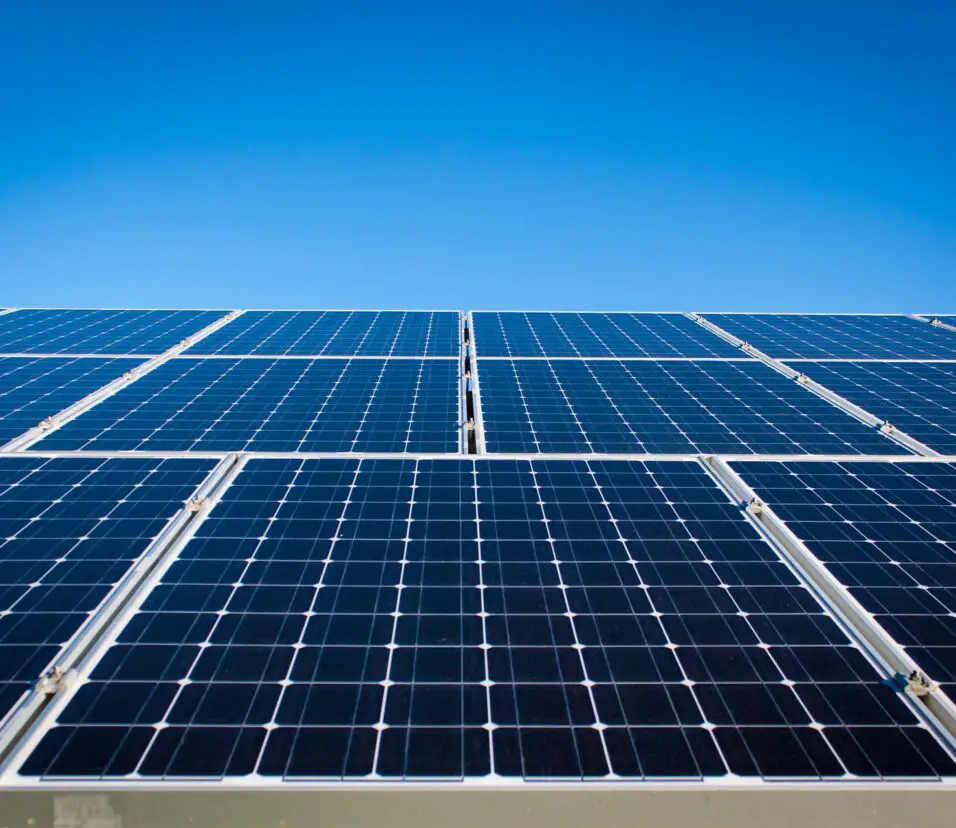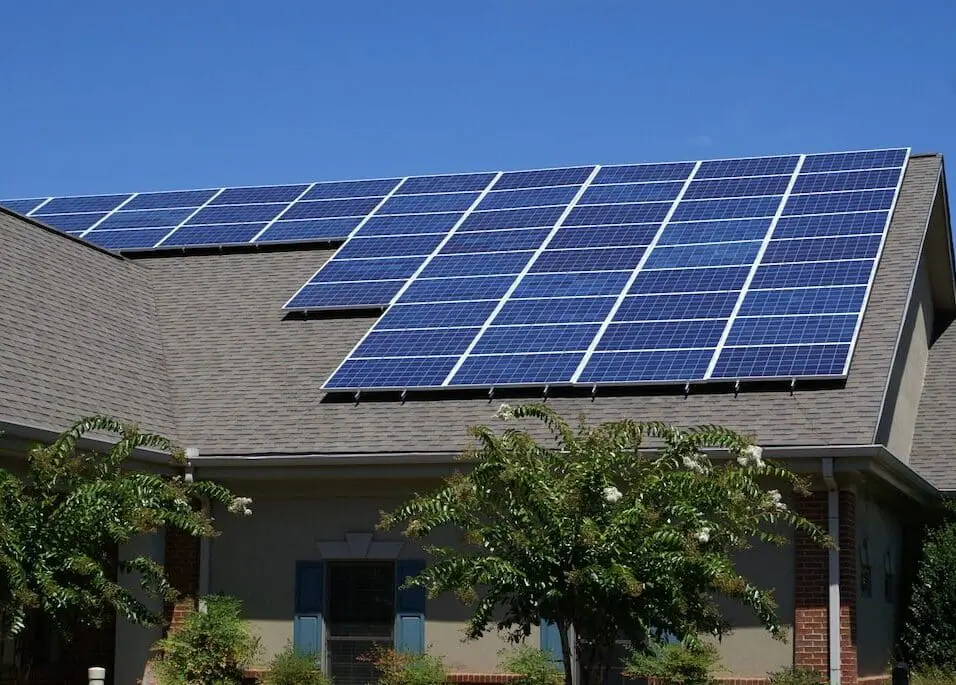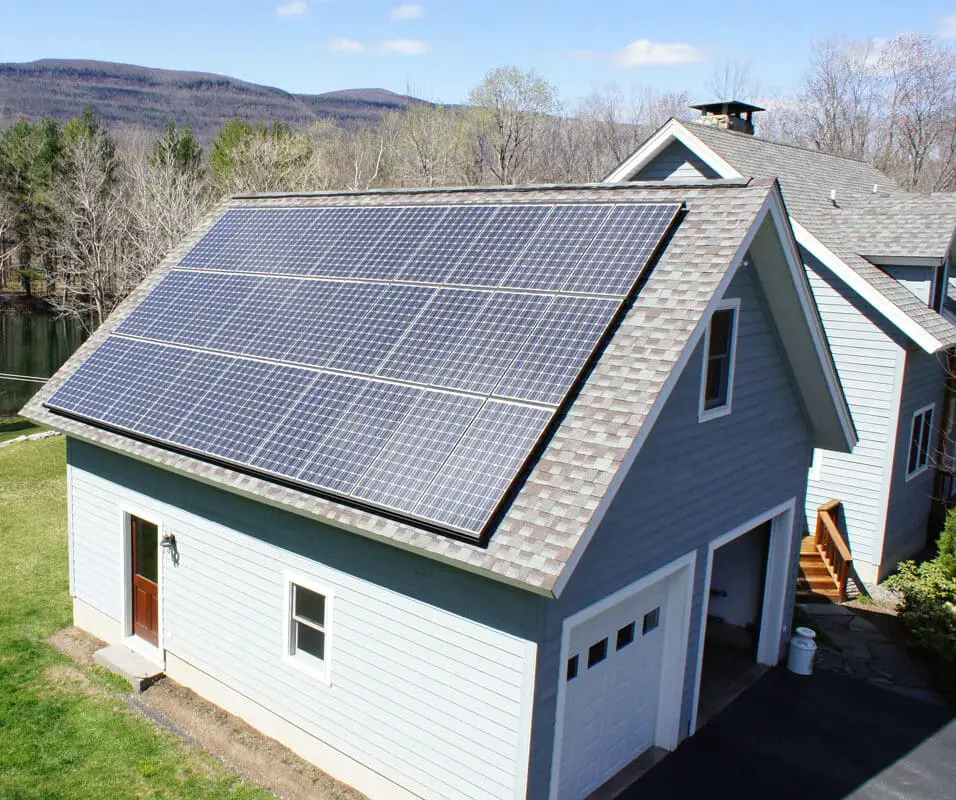How Do Solar Panels Work For Your Home
Introduction
How Do Solar Panels Work For Your Home: At the core of solar panels is a concept called the photovoltaic effect, first discovered in the 19th century by French physicist Alexandre-Edmond Becquerel. This phenomenon involves the interaction of photons (tiny particles of light) with certain materials, typically made of silicon, found within solar cells. When sunlight strikes these solar cells, the photons transfer their energy to the electrons within the silicon atoms, liberating them from their usual positions and creating an electric current.
To ensure the efficient capture and conversion of sunlight, solar panels are equipped with an intricate network of conductive materials, often arranged in a grid-like pattern. These conductors enable the flow of the generated electric current out of the solar cells and into an inverter. The inverter plays a vital role in the solar energy system, as it converts the direct current (DC) produced by the solar panels into alternating current (AC), which is the type of electricity commonly used in homes.
From the inverter, the electricity flows into your home’s electrical system, powering your appliances, lights, electronics, and more. Any excess electricity produced by the solar panels can be stored in batteries or fed back into the grid, allowing homeowners to earn credits or compensation for the energy they contribute to their local electricity network—a concept known as “net metering.”
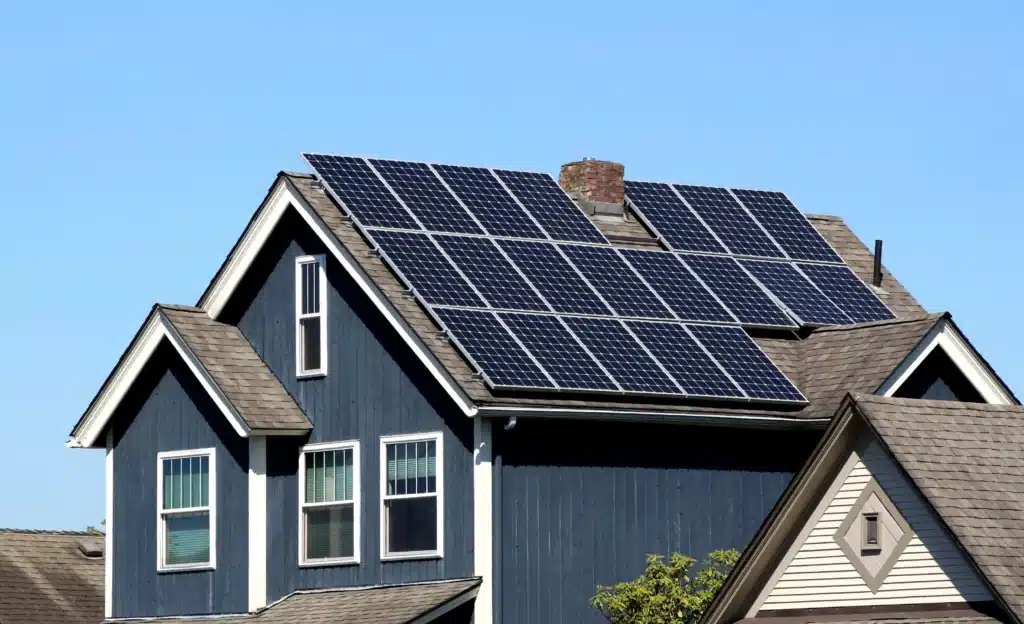
How many solar panels are needed to run a house?
Based on these factors, the average solar panel system for a home in India will typically consist of around 10-15 solar panels. This is enough to generate between 3-5 kilowatts of power, which is enough to meet the energy needs of a typical household. The first step in determining the number of solar panels required is to understand the household’s energy consumption.
Assessing Sunlight Availability
The amount of sunlight a location receives is a crucial factor. The intensity and duration of sunlight vary depending on the geographical location, seasonal changes, and local weather patterns. Areas with more sunlight will require fewer solar panels to generate the same amount of electricity compared to regions with less sun.
Panel Efficiency and Wattage
Higher efficiency panels produce more electricity per square meter. Additionally, the wattage rating of the solar panels plays a significant role. For instance, a 300-watt solar panel will produce more electricity than a 200-watt panel under the same conditions.
Daily Solar Energy Production
To estimate the daily solar energy production, multiply the number of solar panels by their wattage rating. Then, consider the average daily sunlight hours in the area. For example, if you have ten 300-watt solar panels and the area receives an average of five hours of sunlight per day, the total daily solar energy production would be 10 x 300W x 5 hours = 15,000 watt-hours or 15 kWh.
Can I run AC on solar panel?
Yes, you can run an air conditioner with solar power.
Solar panels can power AC, saving money and the environment. Powerful solar panels and a converter make it possible.
Understand your air conditioner’s energy consumption first. This information is normally on the AC unit’s label or user handbook. The unit’s power rating in watts or kilowatts will indicate its energy consumption per hour.
For solar AC operation, you’ll need a solar system with enough power. ACs use more electricity during startup (compressor kick-in) and peak cooling. Energy efficiency can also lower AC power use.
You’ll need solar panels and an inverter to convert DC electricity from the solar panels into AC power for your AC unit. Batteries can store excess energy from sunny hours for later use, bridging the gap between energy output and AC consumption during overcast or nocturnal times.
How do solar panels generate electricity at home?
Solar panels absorb sunlight through PV cells. Electricity flows because this energy forms electrical charges that move in response to a cell’s electrical field.
Solar panels receive photons, small energy packets, from sunshine. Some electrons in the panels’ semiconductor material become excited and break loose from their atoms when light hit it. This makes electron-hole pairs.
Freed electrons pass through the semiconductor material, creating an electric current. A conductive grid on the solar panel directs electron flow. The conductive grid closes the circuit by sending electricity to metal contacts at the panel edges.
The electricity generated is DC, not AC like most residences use. The electricity is compatible with household equipment with an inverter. The inverter converts solar panel DC electricity into AC electricity for home lighting, appliances, and other devices.
Solar panel owners can connect to the power grid in numerous areas. We call this net metering. When solar panels create more electricity than the home needs, the excess becomes grid electricity. The utility company may give the homeowner credits or reimbursement. The home can use grid electricity during low sunshine or high energy consumption.
How much solar panel required for ac?
However, as a general rule of thumb, we recommend getting roughly 10 panels, each having a wattage of around 250 watts. It is advisable to install 6 solar panels with 250 watts each for a 1-tonne AC.
The amount of sunlight your location receives is a crucial factor in determining the number of solar panels required. Sunlight intensity and duration vary based on geographical location, seasonal changes, and local weather patterns. Locations with more sunlight will require fewer solar panels to generate the same amount of electricity compared to regions with less sun. Higher efficiency panels produce more electricity per square meter. For example, if you have a 1 kW solar panel with an efficiency of 20%, it can generate 200 watts of electricity under optimal conditions.
For a precise assessment of the solar panel requirements for your AC, it’s advisable to consult a professional solar installer. They can consider all the variables, such as your location, energy consumption, and panel efficiency, to provide an accurate estimate and design a solar system that meets your specific needs.
To ensure your solar system can power the AC effectively, you’ll need an inverter that can convert the DC electricity generated by the solar panels into AC power compatible with your AC unit.

How do solar panels work in the day?
The way solar panels work is that as the sun shines directly onto a solar panel, the sunlight’s energy is then taken in by the panel’s PV cells. That energy then sparks electrical charges that circulate due to an internal electrical field in the cell, which generates a flow of electricity.
Electron Excitation
As the photons strike the semiconductor material, they transfer their energy to the electrons present in the material. This excites the electrons, causing them to break free from their atoms and creating electron-hole pairs.
Electric Current Generation
The freed electrons are now in a state of motion, creating an electric current as they flow through the semiconductor material. The conductive grid on the surface of the solar panel helps direct the flow of electrons to metal contacts at the edges of the panel, creating a closed circuit.
Direct Current (DC) Output
The electricity generated by the solar cells is in the form of direct current (DC). However, most homes and businesses use alternating current (AC) to power their electrical devices.
Net Metering (Optional)
If the solar panel system is connected to the electrical grid, excess electricity generated during the day can be sent back to the grid. This is known as net metering. Homeowners with net metering agreements may receive credits or compensation from their utility company for the surplus electricity they contribute to the grid.
How does solar panel work in simple words?
Solar panels work by absorbing sunlight and converting it into direct current (DC) electricity. This DC electricity is then converted into alternating current (AC) electricity using an inverter, as AC electricity is the type used by most electronic devices and appliances.
When sunlight strikes the solar panels, it is made up of tiny particles called photons. The solar cells in the panels absorb these photons.
The absorbed photons transfer their energy to the electrons in the solar cell’s material. This energy excites the electrons, causing them to break free from their atoms.
The freed electrons create an electric current as they flow through the solar cell’s material. The flow of electrons is directed by a conductive grid on the surface of the solar panel.
The electricity generated by the solar cells is in the form of direct current (DC). However, most homes and buildings use alternating current (AC) to power electrical devices.
To make the electricity compatible with household appliances, an inverter is used. The inverter converts the DC electricity from the solar panels into AC electricity.
Can we use electricity directly from solar panel?
You can still use your solar panels to power your home without battery storage. In fact, a majority of home solar systems aren’t connected to battery storage. Here’s how it works: Early morning and evening are times with lower solar production, but higher energy needs.
Solar panels generate electricity through the photovoltaic effect, wherein sunlight is absorbed by the solar cells’ semiconductor material. The absorbed energy excites electrons, creating an electric current in the form of DC.
To use the electricity from the solar panels for most household purposes, it must be converted from DC to AC. This is where the inverter comes into play. The inverter is a crucial component of a solar energy system as it takes the DC electricity generated by the solar panels and converts it into AC electricity at the same voltage and frequency as the utility-supplied electricity.
Utilizing AC Electricity from the Inverter for Home Appliances and Electronics
In some regions, solar panel owners have the option of connecting their solar system to the electrical grid. Excess electricity generated by the solar panels can be fed back into the grid. This is known as net metering. Homeowners with net metering agreements may receive credits or compensation from their utility company for the surplus electricity they contribute to the grid.
Do solar panels work on cloudy days?
A common myth: solar panels don’t work at night or when it’s cloudy. Solar panels technically still function at night, but they won’t be generating electricity. However, they will still produce electricity during cloudy weather.
Panel Efficiency on Cloudy Days
The efficiency of solar panels in converting sunlight into electricity is reduced on cloudy days. High-quality solar panels may still achieve around 10-25% of their peak efficiency, depending on the type of panel and the cloud cover’s thickness. Some newer, more advanced panels are designed to perform better in low-light conditions.
Temperature Considerations
Interestingly, solar panels may experience a slight increase in efficiency in cooler temperatures, which can sometimes occur on cloudy days. Excessive heat can reduce the panel’s efficiency, so the moderate temperatures on cloudy days can help compensate for the reduced sunlight.
Continuous Electricity Generation
Even on cloudy days, solar panels can still contribute some electricity to your home or business. The power output may be lower, but the solar system will continue to generate electricity as long as there is some available light.
Battery Storage (Optional)
If your solar system is equipped with battery storage, excess electricity generated during sunny periods can be stored for use on cloudy days or during nighttime. This provides a degree of energy independence and ensures a continuous power supply even in the absence of direct sunlight. A common myth: solar panels don’t work at night or when it’s cloudy. Solar panels technically still function at night, but they won’t be generating electricity. However, they will still produce electricity during cloudy weather.
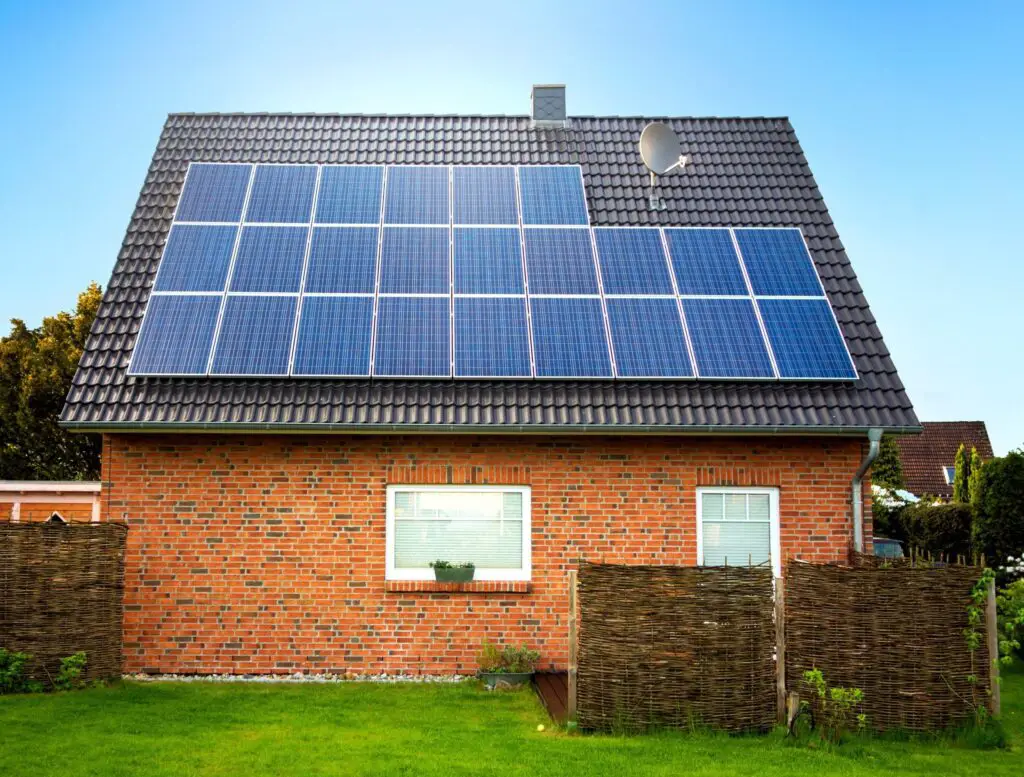
Conclusion
Solar panels, through the photovoltaic effect, harness the sun’s energy and convert it into usable electricity using semiconductor materials, typically made of silicon. The benefits of solar panels work extend beyond environmental considerations. They provide energy independence, shielding homeowners from fluctuations in electricity prices and offering a stable and predictable source of power. Additionally, many regions offer incentives and tax credits for installing solar panels, further enhancing their appeal as a viable and financially rewarding investment.
A common myth: solar panels don’t work at night or when it’s cloudy. Solar panels technically still function at night, but they won’t be generating electricity. However, they will still produce electricity during cloudy weather. As solar technology continues to advance, efficiency and affordability improve, making solar panels an increasingly accessible option for households of all sizes. However, successful integration requires thoughtful planning, considering factors such as local climate, energy needs, and the available space for installation.



